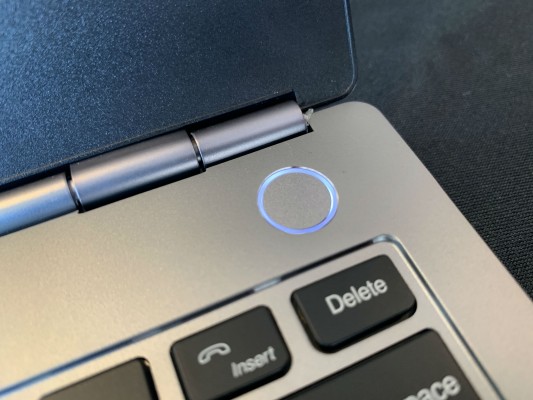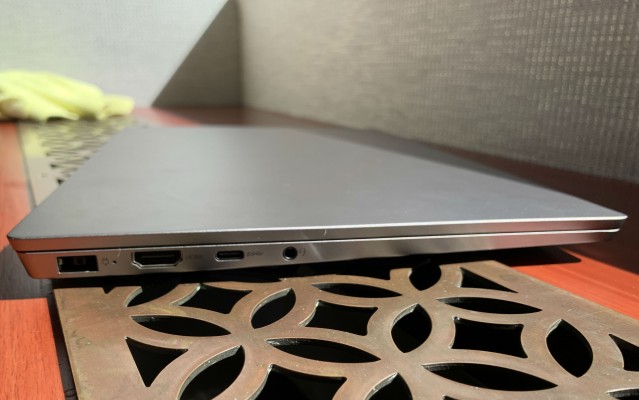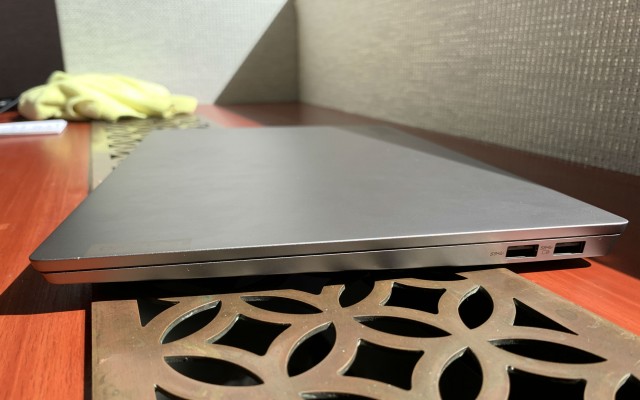Lenovo ThinkBook 13s Hands-On: Sleek Design, Low Price
Lenovo's ThinkPads are some of the best business laptops, but their high price is tough to overlook. Enter ThinkBook, a new line of laptops designed for small businesses and privacy-conscious consumers on a budget.
The ThinkBook 13s and ThinkBook 14s will be available in late May. The 13-inch version will start at $729 while the 14-inch model will cost a bit more, at $749. One reason to buy a ThinkBook over an IdeaPad is for Lenovo's enterprise-level support, which includes optional upgrades for next-day onsite repairs and an extended 5-year warranty.
Lenovo ThinkBook 13s and ThinkBook 14s Specs
| Row 0 - Cell 0 | Lenovo ThinkBook 13s | Lenovo ThinkBook 14s |
| Starting Price | $729 | $749 |
| Display | 13.3-inch, 1920 x 1080, 300 nits | 14-inch, 1920 x 1080, 250 nits |
| CPU | Up to Intel Core i7 (8th Gen) | |
| RAM | 8GB, 16GB | |
| Graphics | AMD Radeon 540X | |
| Storage | 128GB/256GB/512GB | |
| Ports | USB-C, USB 3.1 (Type-A), HDMI, headphone | |
| Size | 12.1 x 8.5 x 0.6 inches | 12.7 x 8.8 x 0.7 inches |
| Weight | 3.1 pounds | 3.3 pounds |
The ThinkBook 13s and 14s are powered by up to 8th Gen Intel Core i7 CPUs and come with either 8GB or 16GB of RAM. For storage, you can choose a 128GB SSD on the base model or go up to 512GB of space. Equipped with a mid-range AMD Radeon 540X GPU, the ThinkBook 13s and 14s should be able to run graphics intensive programs and even some games at low-to-medium settings.
MORE: Best Lenovo Laptops
The ThinkBook 13s has a 13.3-inch, 1080p anti-glare display with up to 300 nits of brightness, while the ThinkBook 14s has a 14-inch, 1080p anti-glare display that tops out at 250 nits.
The ThinkBook 13s and ThinkBook 14s serve as a middle ground between Lenovo's consumer IdeaPads and the flagship ThinkPad line. As such, this duo comes with several familiar features from Lenovo's business and mainstream laptops, including an edge-to-edge display and a webcam cover.
Sign up to receive The Snapshot, a free special dispatch from Laptop Mag, in your inbox.
Aesthetically, the ThinkBook 13s and 14s are more similar to Lenovo's midrange IdeaPad laptops than the black carbon fiber ThinkPads (although a metal ThinkPad is on the way).
Both are made of anodized aluminum for durability (though they lack MIL-STD certification) and flaunt a slim chassis that reminded me a lot of the IdeaPad 530s. While they won't stand out among all the other silver laptops on the market, the ThinkBook 13s' and ThinkBook 14s' nondescript chassis are perfectly suited for office use.
If there's one standout design feature, it's the ThinkBook 13s and 14s' thin bezels, which result in a screen-to-body ratio of 80%. This keeps the size of the laptops to a minimum so you can slip them into your bag when you're traveling.
The ThinkBook 13s weighs 3.1 pounds and is 0.6 inches thick while the ThinkPad 14s weighs 3.3 pounds is about as slim. And with an estimated 11 hours of battery life on the 13-inch version and 10 hours on the 14-inch version, you can get plenty of work done on those undersized airplane trays during a lengthy international flight.
Port selection on both of these laptops is good, but they lack a Thunderbolt 3 port for fast transfer speeds and connecting to multiple 4K monitors. Both models have a USB-C port, two USB 3.1 Type-A ports, an HDMI and a headphone/mic jack.
Along with a webcam cover, these laptops offer small businesses plenty of crucial security features, including a fingerprint reader for fast and secure login, along with a TMP 2.0 chip.
So far, the ThinkBook 13s and 14s are shaping up to be a compelling pair of affordable business laptops. We'll see how they hold up when we receive review units later this year.
Phillip Tracy is the assistant managing editor at Laptop Mag where he reviews laptops, phones and other gadgets while covering the latest industry news. After graduating with a journalism degree from the University of Texas at Austin, Phillip became a tech reporter at the Daily Dot. There, he wrote reviews for a range of gadgets and covered everything from social media trends to cybersecurity. Prior to that, he wrote for RCR Wireless News covering 5G and IoT. When he's not tinkering with devices, you can find Phillip playing video games, reading, traveling or watching soccer.






